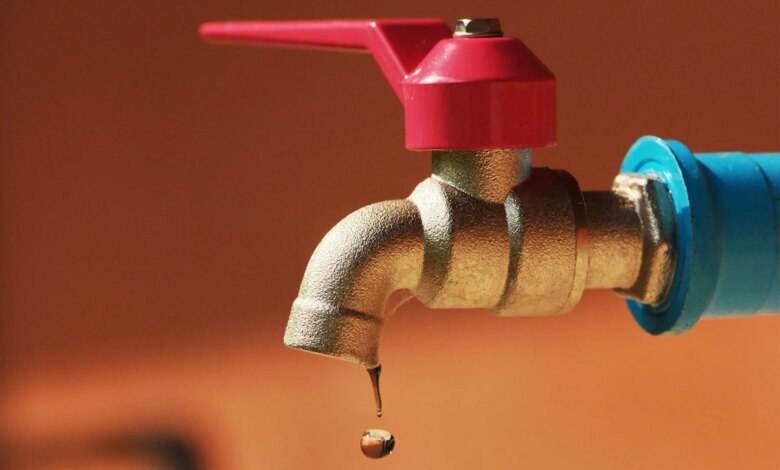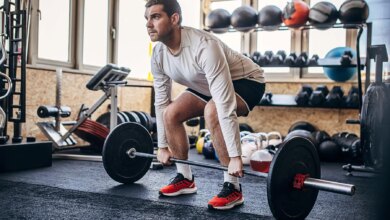Have Male Urinary Tract Symptoms? An App May Offer Relief

April 24, 2024 – The urgent need to pee, a strangled flow, and the feeling that you didn’t get it all out. Those are symptoms of male lower urinary tract problems, and more than 72% of men experience at least one of them.
But European researchers believe they may have a new way to manage these symptoms: A smartphone app that combines pelvic floor training and behavioral changes.
It may sound too good to be true. But research presented this month at a major urology conference in Paris showed that digitally accessible behavioral and physiotherapy strategies might be as effective as medication for many men experiencing mild to moderate bladder symptoms known as LUTS.
“We think flexibility in time and location for our patients is a high priority,” said Christian Gratzke, MD, the study’s lead investigator and urologic surgeon at University Hospital Freiburg in Germany. “That’s the reason that using an app is good for many people.”
Gratzke and his colleagues recruited 237 German men with mild to moderate lower urinary tract symptoms, specifically an enlarged prostate or overactive bladder. The participants were split into two groups and assigned to their previous treatment regimen plus app-based therapy combining pelvic floor training plus behavioral/lifestyle interventions and bladder control techniques, or just to previous treatment.
App users were asked to record a urination diary and complete a series of questionnaires on how their symptoms bother them and on quality of life.
At 12 weeks, men who used the app-driven strategy experienced significant and clinically meaningful improvements in their symptoms, as well as significant improvements in symptom severity and quality of life; all of these measures were greater than those in men receiving their usual care.
“We were able to show that physiotherapy and lifestyle advice is another pillar in the treatment of male LUTS,” said Gratzke. “What was new was the fact that we used an app that incorporated multiple modules, e.g. stop urge training, mental training, a knowledge section, and a physiotherapy section, which was the strongest part of it all.”
LUTS Lowdown
Aging and bothersome bladder emptying and voiding challenges often go hand-in-hand. These issues are commonly related to an enlarged prostate that pushes against the urethra (the tube through which urine flows) or bladder filling and storage dysfunction, aka overactive bladder, which can be caused by either an enlarged prostate or a malfunctioning detrusor muscle in the bladder wall. LUTS is pervasive, affecting roughly half of all men in their 60s. But these problems often start to form much earlier.
“As men age into their late 40s and they get into their 50s, they start noticing that the force of the stream goes down, and as it goes down, the bladder has to generate more and more force and pressure to get the same amount of urine out,” said Seth Cohen, MD, MPH, associate professor in the Department of Urology at NYU Langone Medical Center in New York City and director of the Men’s Health Show on Sirius XM 110 radio. “Some men don’t even notice the difference; it’s just part of life. For others, this is a great problem; they have to go to the bathroom all of the time – the prostate is getting larger and causing obstruction, and the bladder keeps sending signals to the brain – I gotta go, you’re not completely emptying.”
David Chan, MD, system vice-chair in urology at Northwell Health in New Hyde Park, NY, recalled a former patient fitting Cohen’s “gotta go” description perfectly. “He knew where every single bathroom was everywhere he went and realized that it was time to do something about it; it was what made him see a doctor,” Chan said.
Selecting the Right Management Strategy
LUTS are not one-size-fits-all disorders and neither is treatment. “It stands to reason that most patients would respond and be inclined to the lesser invasive options, whenever possible,” said Arthur Louis Burnett, MD, director of the Basic Science Laboratory in Neuro-Urology and professor of urology at Johns Hopkins Medicine in Baltimore. “The range of options really comes down to patient preference,” he said.
Cohen agreed. “At NYU, we do try to encourage behavioral modification first, like cutting back on caffeine and cutting back on alcohol and other irritants. This can be a game changer for guys waking up at night to pee, peeing frequently during the day, urgency, and confidence,” he said. “A lot of time, you can get them to 90%.”
Other behavioral and lifestyle modifications include limiting fluid intake, physical activity, timed voiding (emptying bladder based on time intervals), and double voiding (urination followed by a second attempt 1-2 minutes later).
Pelvic floor training (which Gratzke referred to as physiotherapy) is more common for men in Germany than in the U.S. One misconception is that it is geared toward women, especially after they give birth or develop overactive bladder or stress incontinence. However, Patrick Wenning, a physical therapist at Restore Motion, a practice based in Rockville, MD, said at least 50% of his practice cases entail pelvic floor training and workshops in men, who are referred to him by local urologists and colleagues.
“The workshops are really geared toward men who are in their 40s and 50s,” said Wenning, who has additional specialty training in pelvic floor issues. “You have this system within your body that you need to start being aware of and pay attention to it early. So when things start to not work the right way, you can tune in and get an early intervention.”
The pelvic floor is made up of muscles that support the organs (including the bladder and rectum) in the pelvis. Pelvic floor training entails learning how to activate, strengthen, and isolate these muscles, which can help reduce urgency and leakage.
“I want men to learn how to relax the pelvic floor muscles, decrease the tone of the pelvic floor musculature, and engage and let go of the muscles in the right way,” said Wenning. “If the musculature is on the right path, it will be able to sustain the bladder when you’re asleep, and the bladder will be able to hold the urine and then send the signal to urinate at the right time.”
Gratzke agreed. “Strengthening the pelvic floor has certain advantages but few are doing that,” he said. “It comes down to my preference to always prevent the disease, not to treat it. You know, people go to a gym because they want to work out; they do muscle training, endurance training, etc. Why not combine this with physiotherapy of your pelvic floor?”
Granted, study participants were highly motivated, which may have contributed to their success over their symptoms. It’s a limitation that needs consideration. For men who don’t have the time or don’t wish to deal with the expense of physical therapy, there are medications to choose from.
“I tell patients, the best person to take care of you is you. Know your body,” said Chan.
These exercises are easy to do, once you know which muscles to target. One of the easiest ways to locate your muscles is during urination. Here’s how:
- Halfway through urination, try to stop or slow down the flow of urine.
- Don’t tense the muscles in your buttocks, legs, or abdomen, and don’t hold your breath.
- When you can slow or stop the flow of urine, you’ve successfully located these muscles.
Some men find these muscles by imagining that they are trying to stop the passage of gas. Squeezing these muscles gives a pulling sensation; these are the right muscles for pelvic exercises. It’s important not to contract other muscles.
To do the exercises:
- Contract these muscles for a slow count of five.
- Release the muscles to a slow count of five.
- Repeat 10 times.
- Do a set of 10 daily, three times a day.
Source link




